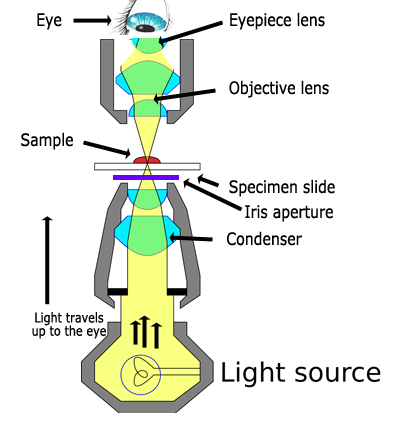|
An Introduction To Light Microscopy For Younger People and Beginners |
|||
|
Understanding The Microscope |
|||
|
If you are going to use something - a phone, a microscope, a fridge... it helps to uderstand how that thing works. Often, it can be very technical, and too much for younger people to grasp. So here is a simple explanation. Light rays or waves are energy packets which travel the fastest anything can in the universe. When the light hits something, it begins to carry information about the thing it hit. Our eyes have evolved to receive and
consider the information the light carries. We see an image. It is possible to manipulate light using shaped glass. A lens. We can stretch the light out so an image in the light gets bigger and bigger, like the beam of a torch. But it also gets fainter and dimmer. |
|
||
| << PREVIOUS | NEXT >> | ||
